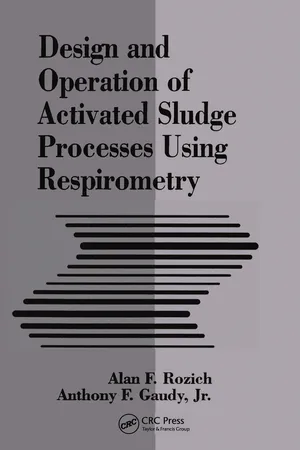
Design and Operation of Activated Sludge Processes Using Respirometry
- 208 pages
- English
- ePUB (mobile friendly)
- Available on iOS & Android
Design and Operation of Activated Sludge Processes Using Respirometry
About this book
This book provides a thorough overview of respirometry and its scientific and engineering basis. The book describes the fundamentals of biological waste treatment, development of predictive models for system design and operation, and how respirometry fits in with these operations. It also presents case studies, which give you concrete examples of the application of respirometry.This book will help activated sludge process control designers, operators, and managers of biological wastewater treatment facilitieslearn how to improve methods for the analysis of biological wastewater systems, enhance design and treatability projects, optimize and troubleshoot plant operations, and accurately predict the impact of new loads or streams on biological wastewater facilities.
Frequently asked questions
- Essential is ideal for learners and professionals who enjoy exploring a wide range of subjects. Access the Essential Library with 800,000+ trusted titles and best-sellers across business, personal growth, and the humanities. Includes unlimited reading time and Standard Read Aloud voice.
- Complete: Perfect for advanced learners and researchers needing full, unrestricted access. Unlock 1.4M+ books across hundreds of subjects, including academic and specialized titles. The Complete Plan also includes advanced features like Premium Read Aloud and Research Assistant.
Please note we cannot support devices running on iOS 13 and Android 7 or earlier. Learn more about using the app.
Information
Table of contents
- Cover
- Title Page
- Copyright Page
- Dedication
- Table of Contents
- Preface
- List of Symbols
- 1. Fundamentals of Biokinetics for Activated Sludge Systems
- 2. Basic Principles of Bioreactor Modeling
- 3. Engineering Models for Activated Sludge Systems
- 4. Comparison with Other Approaches and Basic Applications
- 5. Procedures for Obtaining Biokinetic Constants
- 6. Factors Affecting the Values of the Biokinetic Constants
- 7. Case Studies and Applications
- Appendix: Computer Programs
- Index